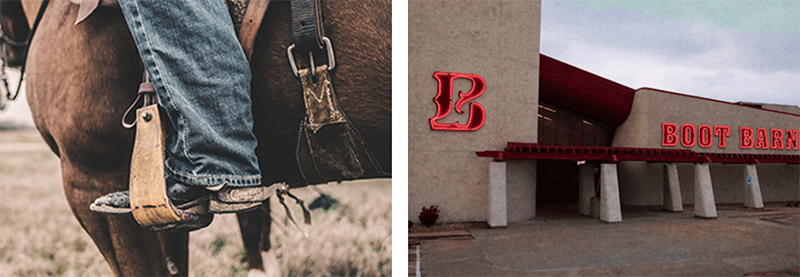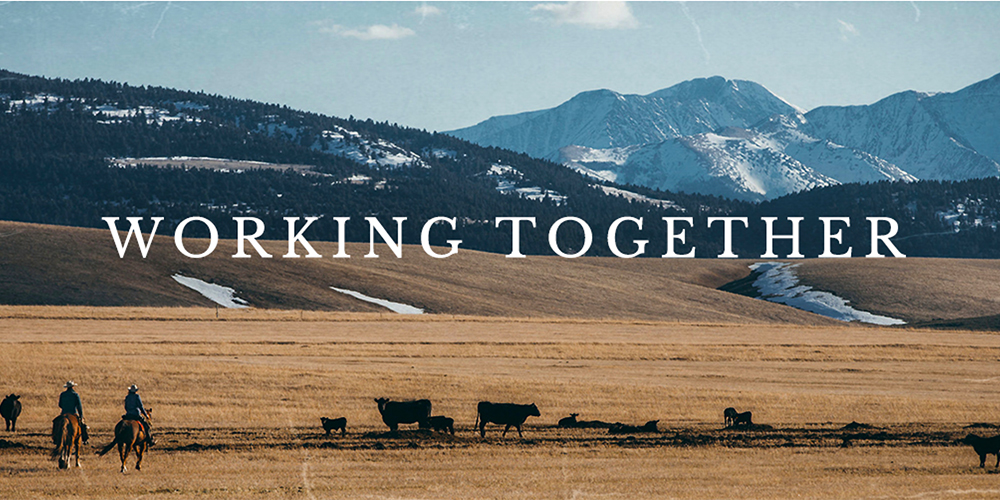<span style="color: #a1a1a1;">As seen with most public company quarterly conference calls with analysts during the COVID-19 pandemic, Boot Barn, Inc. reiterated the meaningful impact the health crisis continues to have on its business. Company President and CEO James Conroy opened the call for the fiscal first quarter saying that the company has seen “a strong correlation, both up and down, between the number of positive COVID-19 cases in specific geographies and the virus impact on consumer sentiment and retail store traffic.” At the same time, he said it has seen a surge in e-commerce demand as consumers have shifted more of their spending online during this unprecedented time.
Boot Barn net sales decreased 20.5 percent to $147.8 million. Consolidated same-store sales declined 14.9 percent in the fiscal first quarter ended June 30. “Given that our same-store sales metric removes stores that have been closed for more than five consecutive days, our actual sales erosion was even more pronounced,” explained Conroy. He said the actual decline was 20.5 percent when including the performance of the stores that remain closed due to COVID-19. Same-store sales in Boot Barn retail stores declined 27 percent while its e-commerce sales grew 52 percent. The e-commerce channel increased 25 percent of total sales in fiscal Q1 compared with 14 percent in the prior-year period.
The newly rebranded Sheplers site has reportedly exceeded initial expectations in both sales and margins. “This is an extremely positive development as we were able to reduce the promotional activity on the new Sheplers site, drive a higher-margin rate and upgrade the branding with a focus on its western heritage,” explained Conroy.
Looking ahead BOOT intends to add two more capabilities to its e-commerce business, including the fulfillment of e-commerce orders from its stores and same-day delivery from its stores using a third-party delivery company.
Work Boots reportedly grew as “customers pivoted to more functional products for their work needs.” Sales in non-flame resistant work apparel improved to positive growth in June after declining in May. Sales of flame-resistant work apparel declined “largely as a result of the softening in the oil and gas markets.” Same-store sales in Texas, Colorado, Wyoming, and North Dakota lagged the chain average as many of its stores in these states serve customers working in the oil extraction industry.
Western Boots and Apparel declined during the quarter. Conroy said they believe that the cancellation of rodeos, country music concerts and other festivals that typically occur in the spring and summer have contributed to sales declines in these categories. “In the near term, we expect our sales to shift to even more functional versus discretionary product,” explained Conroy.
Exclusive brand penetration grew 21.9 percent in the first quarter, an increase of 200 basis points, compared to the prior-year period. BOOT’s exclusive brands, Cody James and Shyanne, reportedly “continue to develop a loyal customer following” and remained the retailer’s number two and number four top-selling brands in the store.
The retailer saw conditions improve across its retail stores throughout the quarter as April declined 45 percent, while May declined only 10 percent, and June comps increased by 3 percent. But that sequential improvement was fleeting as certain markets and local jurisdictions took “responsive action and customers reacted,” causing the business to slow from its June sales trends. But there also appears to be just as much potential for upside as COVID-19 cases decline and states see improvement.

<span style="color: #a1a1a1;">Conroy reported that preliminary same-store sales in its retail stores declined by approximately 15 percent in July while e-commerce sales grew approximately 24 percent. He said consolidated July same-store sales declined 10 percent. “This July sales dynamic includes retrenchment in many of our larger markets such as Texas, Arizona and California,” he explained. “Consistent with the sentiment around COVID-19, same-store sales in our retail stores sequentially improved from mid-July through the first week of our fiscal August.” Conroy said the company expects that retail store sales will continue to fluctuate based upon the news and customer response around COVID-19. “We continue to see a strong correlation between our customer shopping behavior and the number of positive COVID-19 test results in their communities,” he said.
BOOT reported all stores are currently open.
Gross profit decreased 35.3 percent to $40.2 million, or 27.2 percent of sales, compared to gross profit of $62.2 million, or 33.5 percent of sales, in the prior-year period. Consolidated merchandise margin eroded 200 basis points in the quarter, driven primarily by two factors. Conroy said that given the outsized volume of e-commerce, the merchandise margin declined 160 basis points based on the composition of the two channels. Second, he said, it experienced a 30 basis point write-down of discontinued inventory at the recently acquired G&L clothing store that focused entirely on work boots and work apparel. “Clearing this merchandise is part of the rebranding process that will change the name to Boot Barn and expand the assortment to include western boots and western apparel,” he said. The balance of the 630 basis point decrease in gross margin resulted from a 430 basis point increase in buying and occupancy costs.
“The merchants did an excellent job of working with our vendor partners, managing down receipts and tightening replenishment algorithms, which enabled us to bring our inventory in line with sales,” he continued. “The expense control measures we implemented resulted in an $8 million decrease in selling, general and administrative expenses during the first quarter when compared to the prior-year period.”
This all resulted in a first-quarter net loss of $500,000, or 2 cents per share, compared to net income of $9.7 million, or 33 cents per diluted share in the year-ago quarter.
The company reported that the balance sheet showed improvement since the year-end report on March 28. It showed that inventory was reduced by $27 million, payables were reduced by $15 million and cash increased by $14 million without increasing its debt load.
“While we believe that the [Q1] sequential improvement was driven in part by external factors, such as easing restrictions or receipt of stimulus payments, I would like to recognize our stores and digital teams for their superb execution during this challenging time,” offered Conroy. “On our last call, we discussed measures we took to reduce operating expenses and preserve the balance sheet in response to the COVID-19 health crisis. These measures included pay cuts for management, reduced store hours, corporate-wide furloughs and layoffs, reductions in marketing spend, and the minimization of third-party expenses. While these were tough decisions to make, we believe they were necessary for the health of the business, and I’m quite pleased with the results.”
BOOT opened five stores in fiscal Q1 for a total of 264 doors and expects to open an additional 10 stores in fiscal 2021, including one store in the second quarter. Conroy said the timeline for new store development is only six months, allowing the company the opportunity to “reaccelerate growth if market conditions show a marked improvement.”
“We anticipate that fiscal 2021 will continue to be a volatile year, but we are confident in our ability to navigate through this temporary challenge and return to growth when conditions begin to normalize,” Conroy concluded.
Photos courtesy Boot Barn
















